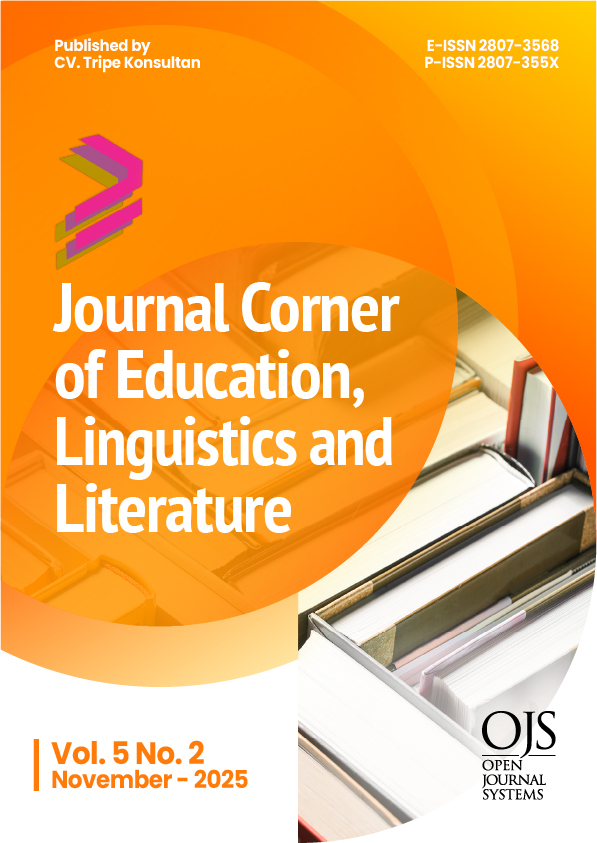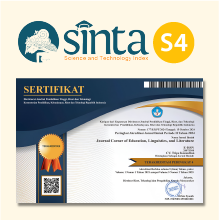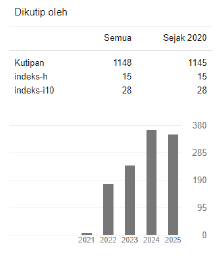The Effectiveness of Practice, Presentation-Demonstration, and Presentation-Discussion (PPDP) Learning Strategies Toward Students’ Conceptual Understanding
 https://doi.org/10.54012/jcell.v5i2.636
https://doi.org/10.54012/jcell.v5i2.636
 Abstract views: 134
Abstract views: 134
 PDF downloads: 24
PDF downloads: 24
Keywords:
conceptual understanding, instructional strategy, photosynthesis concepts, PPD strategiesAbstract
Biology is one of the scientific fields that was born and developed through the steps of observation, problem formulation, making hypotheses based on experiments, drawing conclusions, and discovering concepts and theories. Biology learning will not be separated from laboratory or practical activities. Understanding the concept plays a very pivotal role in learning activities and has become the basis for achieving the learning outcomes. One of the instructional strategies is called PPD (Practice, Presentation and Discussion). This study aimed to determine the effect of the PPD strategies in enhancing students' conceptual understanding. This study applied a pre-experimental research method with One Group Pretest-Posttest Design. The subjects were twelfth grade high school students. These subjects were randomly selected with the number of 35 students. The results showed that the application of the PPD strategies has proven to be influential in enhancing students’ mastery of photosynthesis concepts. The increase in concept mastery could be viewed from the level change of students' comprehension as the mean score of 43.18, where the students’ initial knowledge (pretest) was 38.12, significantly increasing after the implementation of the PPD strategies (posttest) as of 81.30. Based on the standard of minimal accomplishment criteria, the effectiveness of the PPD strategies on students’ concept mastery was between 71-85 which was stated in the high category.
Downloads
References
Amerstorfer, C. M., & Münster-Kistner, C. F. von. (2021). Student Perceptions of Academic Engagement and Student-Teacher Relationships in Problem-Based Learning. Frontiers in Psychology, 12. https://doi.org/10.3389/fpsyg.2021.713057
Bean, J. C., & Meizer, D. (2021). Engaging Ideas: The Professor’s Guide to Integrating Writing, Critical Thinking, and Active Learning in the Classroom, 3rd Edition. John Wiley & Sons.
Churchill, D. (2007). Towards a useful classification of learning objects. Educational Technology Research and Development, 55(5), 479–497.
Dewi, A. C. (2025). IMPLEMENTASI KURIKULUM MERDEKA DALAM PEMBELAJARAN BAHASA INDONESIA: TANTANGAN DAN PELUANG DI ERA DIGITAL. Jurnal Riset Guru Indonesia, 4(1), 01–05. https://doi.org/10.62388/jrgi.v4i1.516
Fiorella, L. (2023). Making Sense of Generative Learning. Educational Psychology Review, 35(2), 50. https://doi.org/10.1007/s10648-023-09769-7
Gacheva, M. I. (2024). CONTENTS OF BIOLOGICAL EDUCATION IN BULGARIAN AND CALIFORNIA EDUCATIONAL SYSTEMS - A COMPARATIVE ANALYSIS. Sofia University.
Gaiseanu, F. (2022). Information in plants: the informational model of the plant cells and plant structures. Cell Biology, 10(1), 31–40.
Hansen, E. J. (2023). Idea-based learning: A course design process to promote conceptual understanding. Routledge.
Hariyatmi, & Tisniasari, H. S. (2023). PBL-Based Science Learning on Living Things Interaction in Junior High School. Proceeding of International Conference on Biology Education, Natural Science, and Technology. https://proceedings.ums.ac.id/incobest/article/view/3474
Huang, S. (2020). The influence of digital multimedia communication forms on graphic design. Computer Systems Science and Engineering, 35(3), 215–222.
Ichsan, F. N. (2021). Implementasi Perencanaan Pendidikan dalam Meningkatkan Karakter Bangsa Melalui Penguatan Pelaksanaan Kurikulum. Al-Riwayah : Jurnal Kependidikan, 13(2), 281–300. https://doi.org/10.47945/al-riwayah.v13i2.399
Ismiati, N. (2024). Implementing STEAM education in the independent curriculum: Enhancing 21st century skills. Tadibia Islamika, 4(1), 21–27. https://doi.org/10.28918/tadibia.v4i1.7238
Lohr, S. L. (2021). Sampling. Chapman and Hall/CRC. https://doi.org/10.1201/9780429298899
Mahyaeny, M. (2021). Application of play-answers learning method to improve student activities and learning completeness in science learning. Jurnal Pijar Mipa, 16(5), 695–699.
Meltzer, D. E. (2002). The relationship between mathematics preparation and conceptual learning gains in physics: A possible “hidden variable” in diagnostic pretest scores. American Journal of Physics, 70(12), 1259–1268. https://doi.org/10.1119/1.1514215
Navarro, F. G., Paje, J. M., & Paglinawan, J. L. (2024). TEACHERS’ PERCEPTION AND INTERVENTION STRATEGIES ON THE SCARCITY OF LABORATORY TOOLS . International Journal of All Research Writings, 5(11), 196–206.
OECD. (2023). PISA 2022 Results (Volume I) he State of Learning and Equity in Education. OECD. https://doi.org/10.1787/53f23881-en
Parthasarathy, J. (2023). Content analysis of Biology textbooks across selected educational boards of Asia for misconceptions and elements of conceptual change towards learning ‘Cell Structure.’ Cogent Education, 10(2). https://doi.org/10.1080/2331186X.2023.2283640
Pratiwi, W. R. (2025). Transforming Education with the "Merdeka Belajar Curriculum: Digging into Challenges and Crafting Effective Strategies in Rural Indonesia. Academic Journal of English Languange and Education, 9, 111–118. https://doi.org/https://doi.org/10.29240/ef.v9i1%20May.12737
Priyambodo, P., Paidi, P., Wilujeng, I., & Widowati, A. (2023). Ethno-ECLIPSE learning model: The bridge between collaboration and critical thinking skills. Journal of Education and Learning (EduLearn), 17(4), 575–588. https://doi.org/10.11591/edulearn.v17i4.20876
Sabri, N. B., Nordin, N. B., & Mohamed, S. B. (2023). Exploration of Teaching Methods in the Implementation of Early Mathematics Teaching and Learning (PdP). International Journal of Academic Research in Business and Social Sciences, 13(1), 700–713.
Saleem, A. N., Noori, N. M., & Ozdamli, F. (2022). Gamification Applications in E-learning: A Literature Review. Technology, Knowledge and Learning, 27(1), 139–159. https://doi.org/10.1007/s10758-020-09487-x
Yoruk, E., Konukoglu, E., Sankur, B., & Darbon, J. (2006). Shape-based hand recognition. IEEE Transactions on Image Processing, 15(7), 1803–1815. https://doi.org/10.1109/TIP.2006.873439
Downloads
Published
How to Cite
Issue
Section
License
Copyright (c) 2025 Dalimawaty Kadir, Yossie Ulfa Nuzalifa, Nurmawati Siregar, Fitria Rhamadona

This work is licensed under a Creative Commons Attribution-ShareAlike 4.0 International License.
All articles published in the Journal Corner of Education, Linguistics, and Literature are licensed under the Creative Commons Attribution-ShareAlike License (CC BY-SA).

















